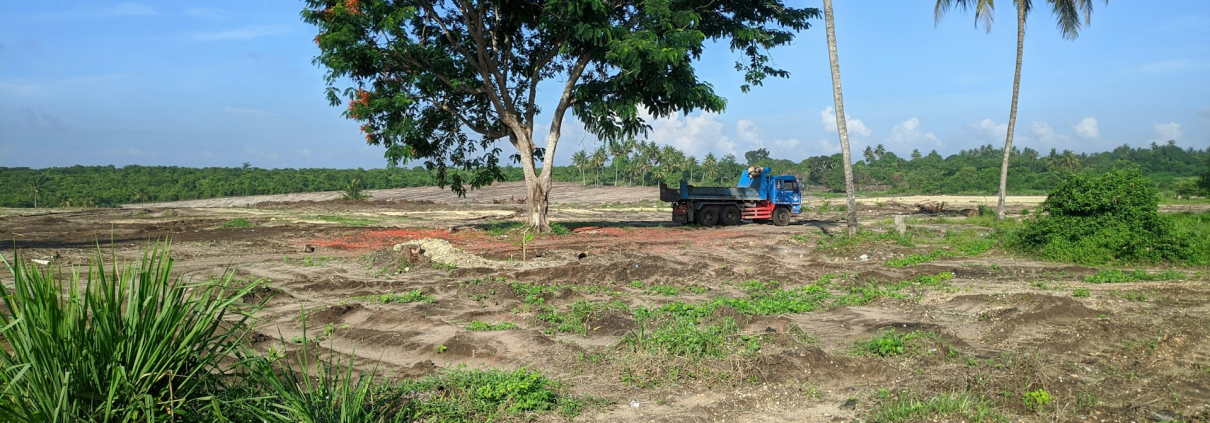Land Clearing Basics: What You Need to Know
Land clearing is an important step when starting a new project, whether it’s building a home, setting up a garden, or developing any open space. It involves removing trees, shrubs and other obstacles from the ground to make way for future use. This process is often necessary to ensure the land is ready and suitable for construction or other activities.
Understanding why land clearing is important can help you see its value. It can increase the usability of your land, improve its appearance and even boost its value. By carefully planning and executing the clearing process, you create a blank slate for whatever you envision next.
Understanding the Purpose of Land Clearing
Land clearing serves several important purposes, depending on what you need from your land. Whether you’re preparing for a new construction project, increasing your property’s usability, or mitigating fire risks, knowing why you’re clearing land helps in planning the best approach.
One of the main purposes is to prepare the land for development. Clearing the land removes unwanted vegetation, rocks and debris, giving you a clean slate for building a new home, road, or other structure. This preparation is crucial for ensuring that your projects have a stable foundation and can be easily accessed by equipment.
Another reason for land clearing is agriculture. Farmers often need to clear land to expand their fields or create more space for livestock. By removing obstacles, the area becomes more productive and easier to manage.
Land clearing is also essential for environmental management. In bushfire-prone areas, clearing reduces the amount of flammable material, which helps create a firebreak. This can protect properties and lives by slowing the spread of fires.
Additionally, clearing can improve land aesthetics. Overgrown areas can be transformed into beautiful gardens or recreational spaces. Understanding these purposes informs how you approach each stage of the clearing process, ensuring that your land is optimally used.
Essential Tools and Equipment for Land Clearing
Having the right tools and equipment makes land clearing safer and more efficient. The choice of tools depends on the size of the area and the type of vegetation you need to remove. Here’s a guide to some of the essential tools you’ll need.
For smaller tasks, manual tools like chainsaws are invaluable for cutting down small trees and branches. Handsaws and loppers are great for pruning and removing smaller plants. A sturdy shovel helps dig and remove roots, while axes can be used for chopping stubborn roots and branches.
When dealing with larger areas, heavy machinery comes into play. Bulldozers push over large trees and clear thick brush, while excavators can dig up tree stumps and rocks. For mulching large debris, wood chippers provide an effective solution by turning it into mulch.
Safety equipment is also crucial in land clearing. To prevent injury from debris, wear hard hats, goggles and gloves. Steel-toed boots offer additional protection against falling objects.
Here’s a list to consider:
- Manual Tools: Chainsaws, axes, loppers, shovels.
- Heavy Machinery: Bulldozers, excavators, wood chippers.
- Safety Gear: Hard hats, goggles, gloves, steel-toed boots.
Being equipped with these tools ensures that your land clearing project is carried out effectively, keeping both safety and efficiency in mind.
Steps to Prepare Your Land for Clearing
Preparing your land for clearing is a crucial step that ensures the process runs smoothly and safely. Following a sequence of steps guarantees that everything is in order before heavy equipment arrives.
Start with a clear plan. Identify the area to clear and assess the types of vegetation present, determining what needs removing. Create a map or diagram if the space is large or particularly complex to guide the clearing process.
Next, inspect the area for obstacles or valuables, like rocks, rubbish, or hidden structures. These must be removed or marked to prevent damage. It is also important to check for any protected species or habitats within the area. If found, special permissions and considerations might be necessary.
Ensure that all necessary permits are obtained. Depending on your location, land clearing might require governmental approvals. Contact local authorities to confirm the legal requirements to avoid any potential legal issues.
Inform neighbours about the upcoming clearing. Providing them notice helps manage expectations and any concerns they might have about noise or disrupted access.
By preparing thoroughly, the land-clearing process becomes more efficient, reducing unexpected delays and ensuring a smoother workflow.
Safety Tips and Environmental Considerations
Safety and environmental care are critical during any land-clearing operation. Ensuring the work is carried out responsibly prevents accidents and minimises ecological impact.
Start by wearing appropriate safety gear. This includes helmets, goggles, gloves and sturdy footwear to protect yourself from potential hazards like falling debris or sharp tools. Everyone on the site should be well-versed in safety protocols and emergency procedures.
Keep a first-aid kit readily available. Accidents can happen, so immediate access to medical supplies ensures quick responses to minor injuries.
Be aware of weather conditions. Rainy or windy days can present additional risks, such as slippery surfaces or unstable trees, making operations dangerous.
It’s also important to consider the environment. Minimise disruption to natural habitats and avoid unnecessary tree or plant removal. If chemicals are used, select environmentally friendly options to prevent soil and water contamination.
See if there are opportunities to recycle or repurpose cleared materials. Trees and shrubs can sometimes be transformed into mulch or compost, reducing waste and benefiting local ecosystems.
Maintaining safe practices while considering the environment not only helps protect workers but also preserves nature for future generations.
Conclusion
Once your land clearing is complete, take the time to assess the results and plan the next steps. Evaluate the cleared area for any remaining stumps, roots, or debris. Address these to ensure the land is fully ready for its intended use.
Consider doing a walk-through of the site with all involved parties. This ensures thorough inspection and also offers a chance to discuss any unexpected findings or necessary follow-ups. Taking this step promotes satisfaction and addresses potential issues while everyone is on hand.
Reflect on the clearing process. Identify what went well and any lessons learned which can be invaluable for future projects. Continuous improvement helps refine strategies, ensuring each clearing task is more efficient than the last.
If you find yourself facing complex clearing tasks that need professional input, TPS Tree Services is here to help. Our expert team is equipped to handle all aspects of land clearing with precision and care. Whether it’s managing large areas or ensuring environmental compliance, we aim to support you in achieving the best outcomes for your land. Contact us today to learn more about how tree services in Brisbane can assist with your land clearing needs.




